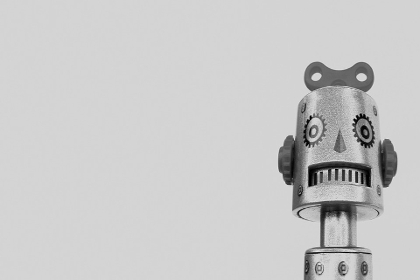
Robots Are Growing Tons of Our Food. Here’s the Creepy Part.
Robotic tractors already roar through our corn and soybean farms, helping to plant and spray crops. They also gather huge troves of data, measuring moisture levels in the soil and tracking unruly weeds. Combine that with customized weather forecasts and satellite imagery, and farmers can now make complex decisions like when to harvest—without ever stepping outside.
September 1, 2016 | Source: Mother Jones | by Tom Philpott
You don't see self-driving cars taking over American cities yet, but robotic tractors already roar through our corn and soybean farms, helping to plant and spray crops. They also gather huge troves of data, measuring moisture levels in the soil and tracking unruly weeds. Combine that with customized weather forecasts and satellite imagery, and farmers can now make complex decisions like when to harvest—without ever stepping outside.
These tools are part of a new trend, known as "precision agriculture," that is transforming how we grow crops. Using everything from sensors on combines to drones equipped with infrared cameras that monitor plant health, service providers—ranging from Monsanto and DuPont to startups—take data from the fields, upload it to the cloud, crunch it, and provide farmers with advice on how to run their operations.
Precision agriculture has been around since the '90s, but it really took off when GPS technology became cheap and ubiquitous in the mid-2000s. It got another major boost in 2013, when Monsanto, a top producer of genetically modified seeds and pesticides, bought a Silicon Valley weather prediction startup called the Climate Corporation for $930 million. Monsanto now claims its digital-ag platform is used on nearly 45 percent of US corn and soybean acres. Even as seed and pesticide sales stagnate across the industry, revenue from farm data services reached $2.76 billion in 2015, and one market research firm estimates it'll grow to $4.8 billion by 2020.
Last year, Monsanto cut a deal with John Deere, owner of most of the US tractor market. Data pulled from Deere tractors will feed the Climate Corp.'s data-crunching services. As a result of these collaborations, Monsanto CEO Hugh Grant recently told investors, Monsanto aims to become the "integrating hub" for seeds, traits, and pesticides, delivering "data insights" straight to farmers.
And now, of course, Monsanto is in the process of being bought by German chemical giant Bayer, itself a large purveyor of pesticides and (to a lesser extent) seeds. If the Monsanto-Bayer deal passes regulatory muster in the United States and the European Union, the combined company will own a quarter of the globe's seed and pesticide markets. In the run-up to the deal, Bayer cited Monsanto's heft in the data market as one of its main motivations for subsuming its smaller US rival.
